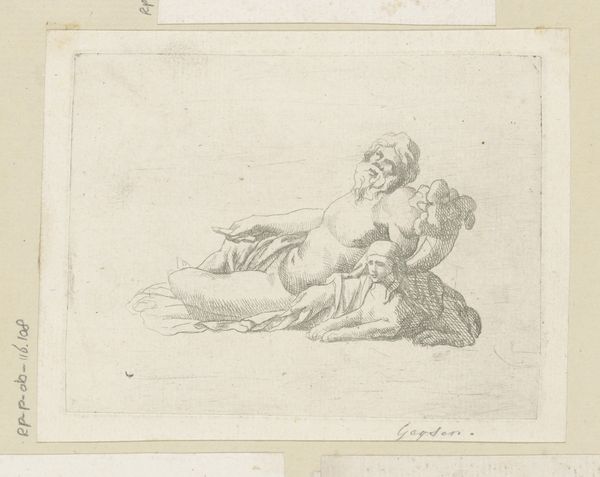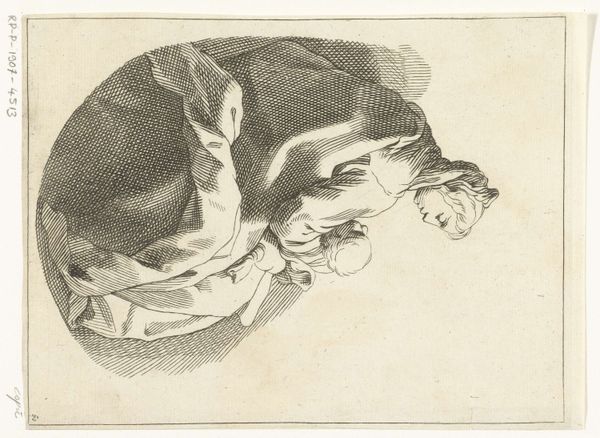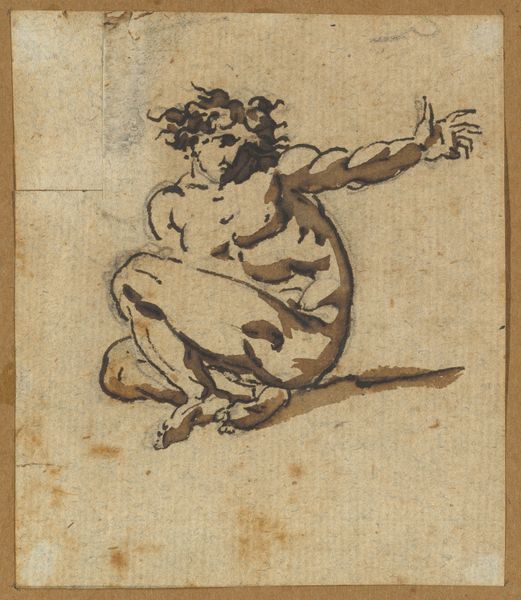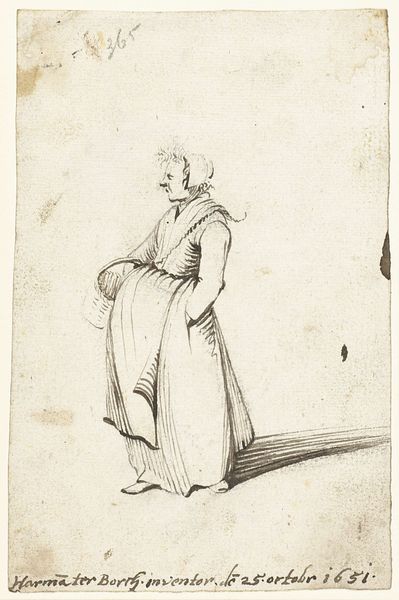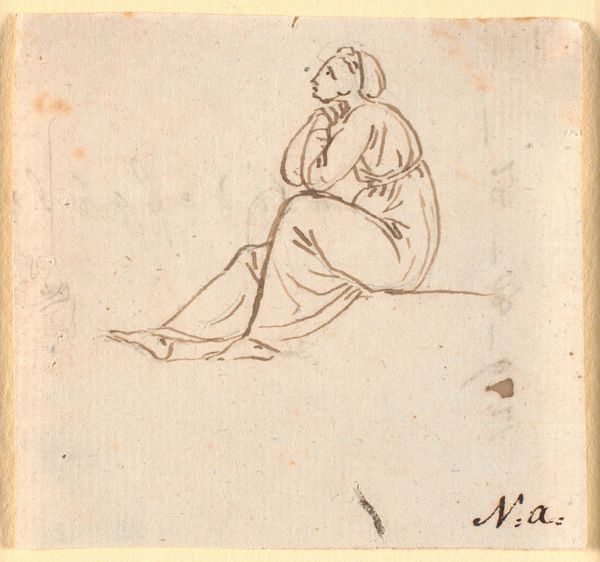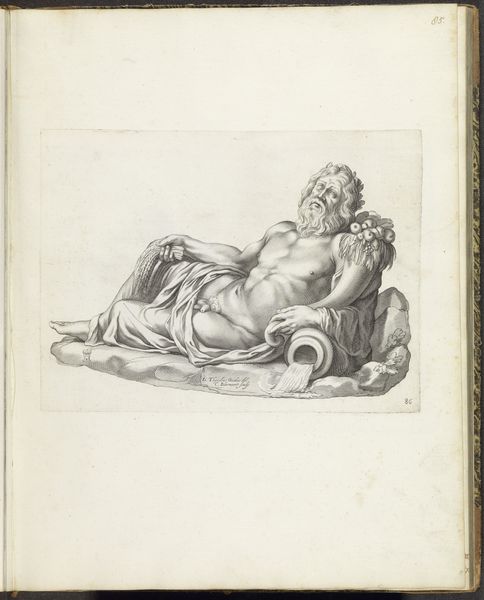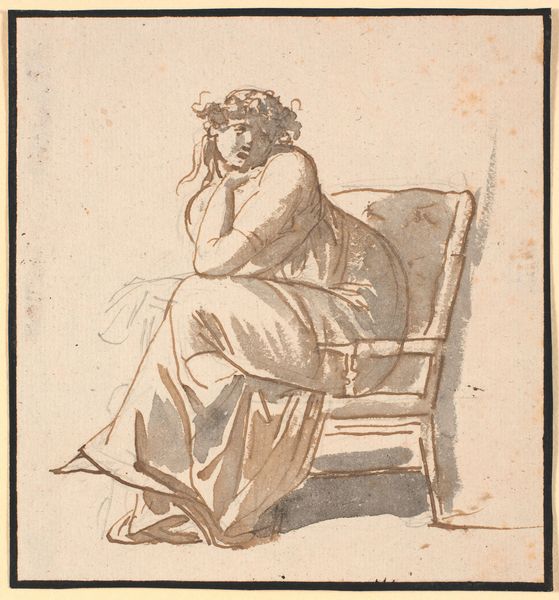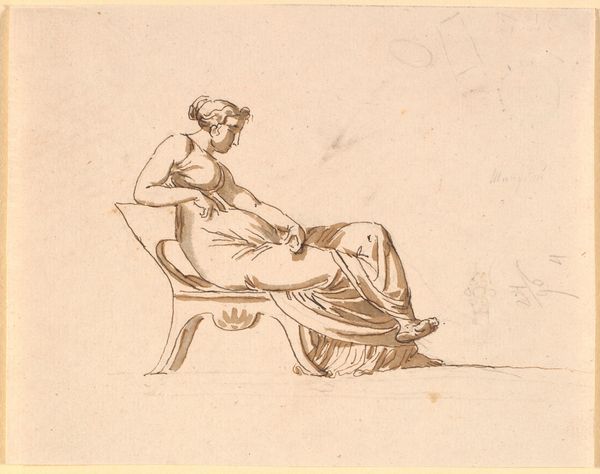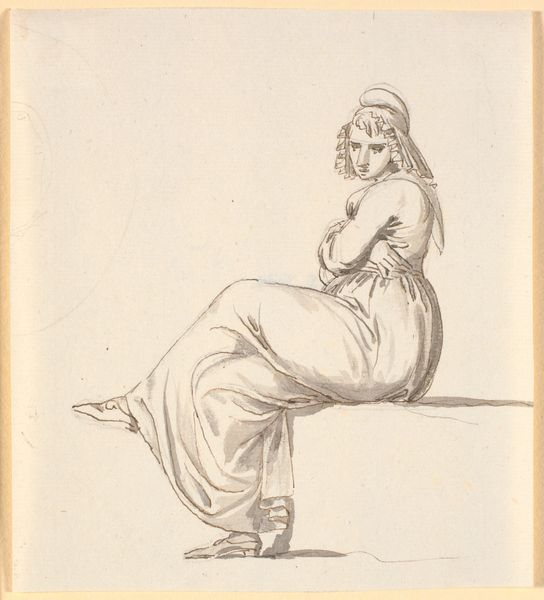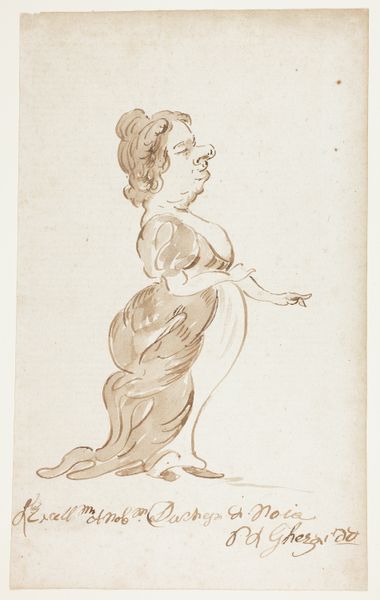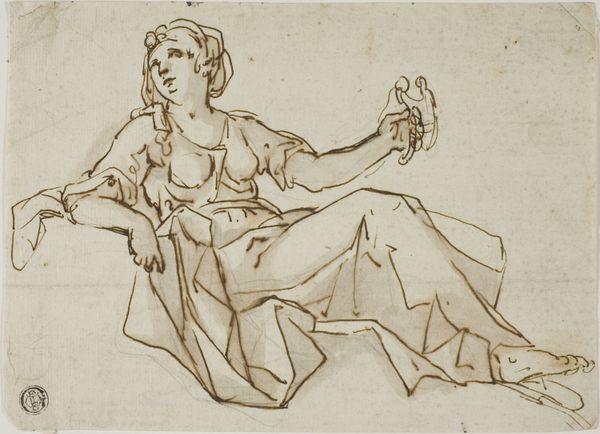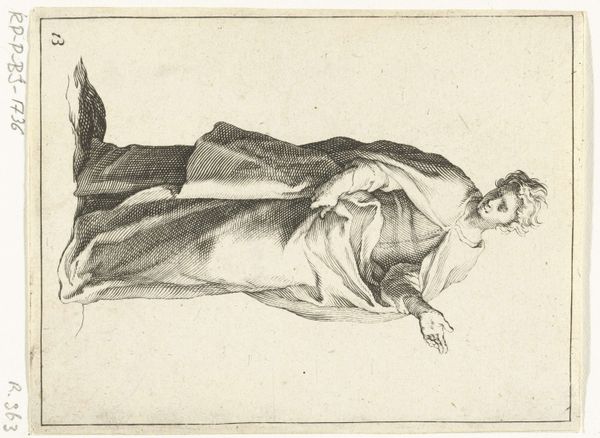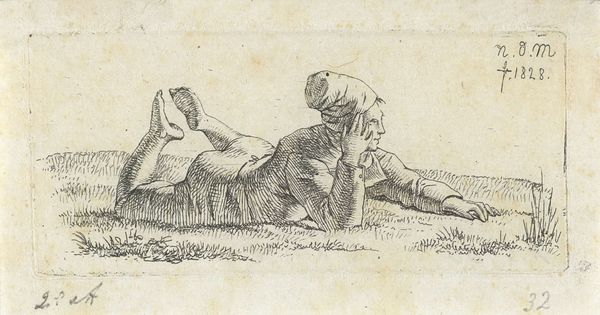
drawing, paper, ink
#
portrait
#
drawing
#
neoclassicism
#
figuration
#
paper
#
ink
#
genre-painting
Dimensions: 83 mm (height) x 103 mm (width) (bladmaal)
Curator: This drawing is entitled "Siddende kvinde med det venstre knæ rejst," or "Seated Woman with Left Knee Raised," created by Nicolai Abildgaard. It was created sometime between 1743 and 1809. It’s rendered in ink on paper, currently residing here at the SMK. Editor: It's captivating. The composition, though simple, speaks volumes. Her posture, a graceful recline, and the texture of the ink wash giving a real weight to her garments. There is a sense of neoclassical poise. Curator: Abildgaard was a key figure in bringing Neoclassicism to Danish art. This drawing exemplifies the movement's focus on line and idealized forms, moving away from the frivolity of the Rococo period, as well as incorporating new approaches to portraiture. Think about what art was consumed and valued then versus now. Editor: Exactly! You can see the dialogue with the art academies being conducted with the careful use of materials. I wonder about the source of the paper, its consistency... Paper mills at this time were undergoing significant industrial changes which shaped their market and distribution. What quality did Abildgaard have access to, and at what cost? How might those practical realities influenced his practice? Curator: Fascinating points. Thinking about institutions like the Royal Danish Academy of Fine Arts, where Abildgaard was a professor, his art obviously served didactic and political functions, instructing students in ideal form while embodying the enlightenment values of reason and order. The choice to depict this woman—her dress code implies classicism that speaks to ideas of virtue and reason associated with the period, thus speaking directly to Denmark's position in Europe at the time. Editor: I find it really quite compelling. Considering how art making reflects changing material conditions and also evolving philosophical frameworks of institutions adds fascinating dimensions to it. The drawing becomes not just an aesthetic object, but an emblem of its time, reflecting the economic and the institutional forces that shaped it. Curator: Agreed, analyzing it through these lenses opens so many avenues. It shows how much material production intertwined with the dissemination of visual knowledge. Editor: Absolutely. It reminds us to look beyond the surface and really think about how production and distribution shapes our understanding of what we now understand is fine art.
Comments
No comments
Be the first to comment and join the conversation on the ultimate creative platform.
